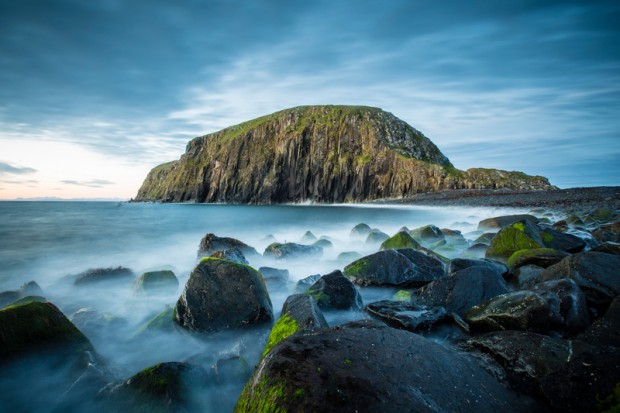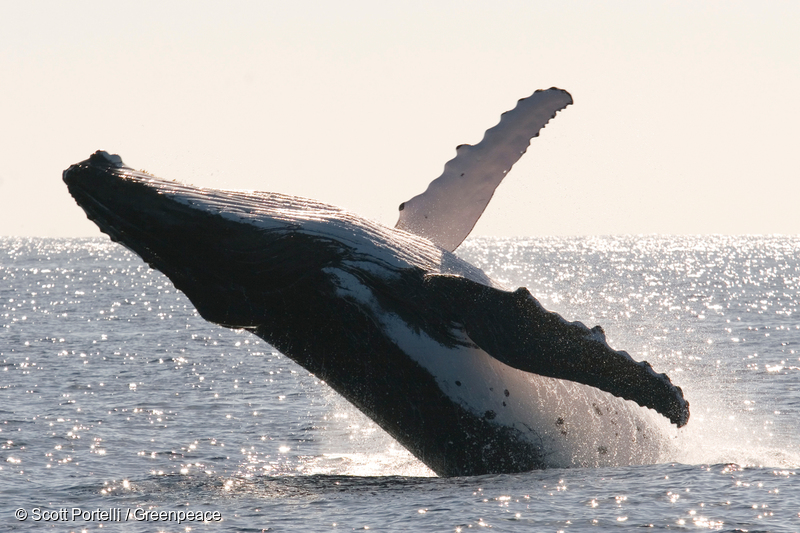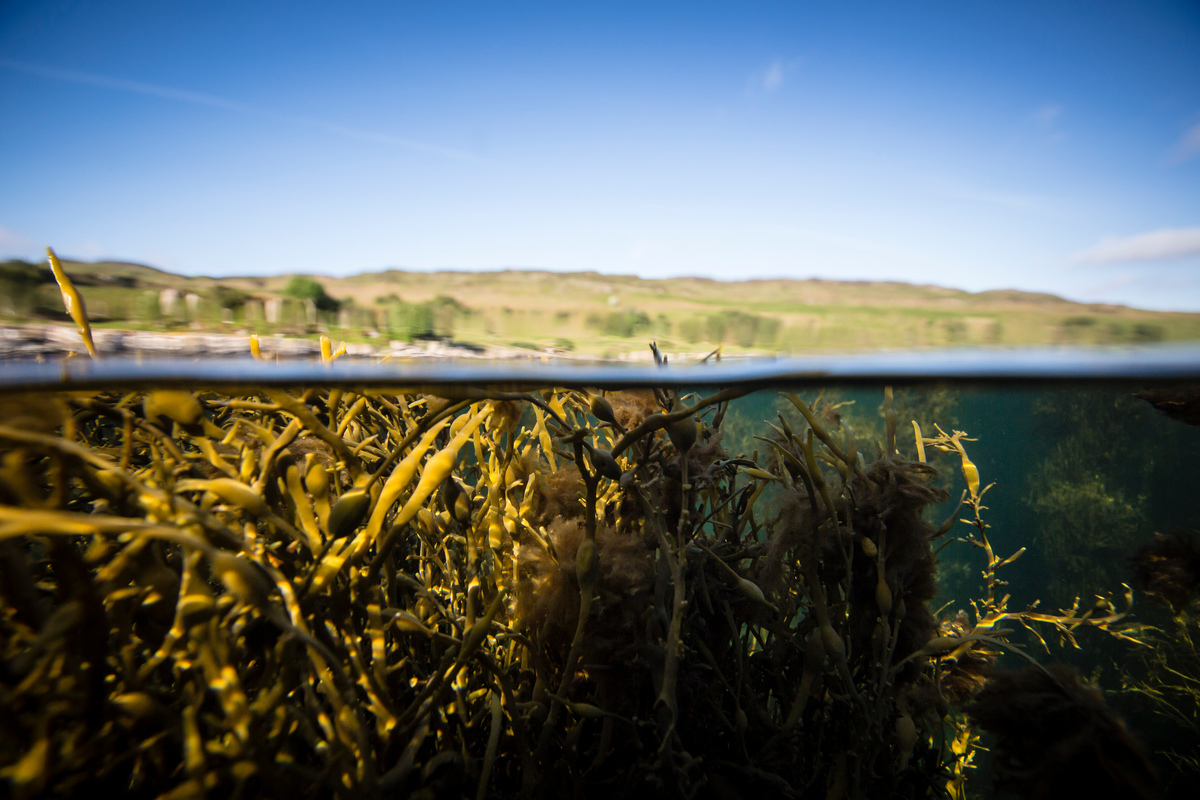Strange things lurk in the icy depths of the Antarctic Ocean
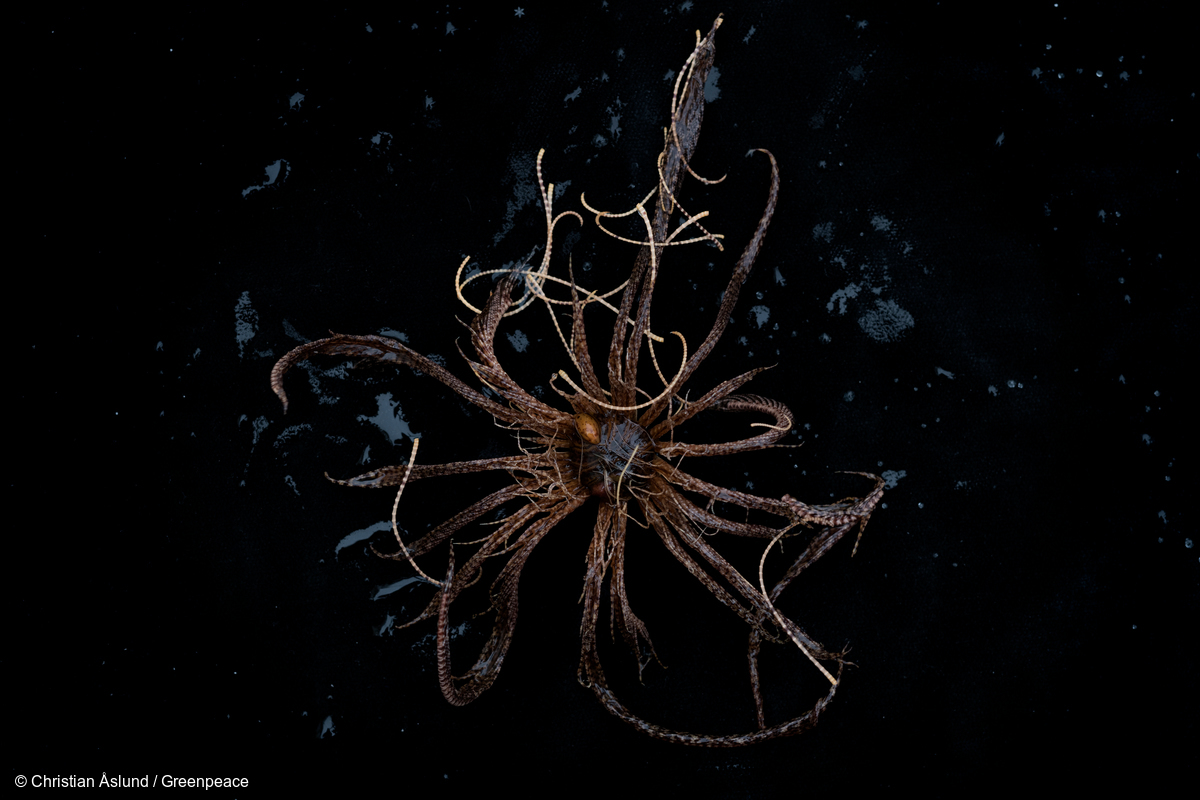
Cute penguins might get all the press, whales certainly give the wows, and big-eyed seals bring the feels – but there’s a lot more to the Antarctic Ocean if you’re prepared to dive a little deeper.
Some very strange things lurk in the icy depths of the Antarctic. Extreme conditions produce extreme animals, and these are worthy of starring roles in science fiction movies, their own X File, and perhaps a few nightmares too.
Whilst we at Greenpeace obviously believe that all critters, however creepy, are worthy of their own special place on the planet, we wanted to give you a quick peek at some of the beasties from the deep that you probably have never heard of. All of them play their own essential roles in the Antarctic Ocean, although many of them lurk in less savoury or glamorous parts of the web of life.
Without further ado, let’s meet the weird and wonderful things that go bump in the depths:
Basket star
Another relative of the humble starfish is the lusciously-tendrilled Chilean basket star. Intricate, otherworldly and alien, this is an animal that has evolved coiled, many-fingered branches along each of its five arms.
They like to perch on top of a rock or handy sponge to spread their interwoven basket of waiting arms armed with tiny hooks as wide as they can to catch passing and falling food. The branch-like appendages then curl around the tasty morsels and transfer them to the basket star’s mouth, which it is sitting on (which is handy, because it’s also its bottom!).

Antarctic feather star
A feather star is basically a specially adapted cousin of the starfish which looks like a cross between an animated palm tree and a feather duster. Their body design is quite simple – a glorified mouth surrounded by feathery arms.
Most of the time they stay rooted to the seafloor, catching passing morsels of food falling from above – but when they need to move they swim in a mesmerising, ethereal way that has to be one of the most amazing forms of locomotion in the natural world.

Crabeater seal
On the face of it, these blubbery furballs might not seem the weirdest thing swimming in the Antarctic ocean – but wait until they give you a grin. With a mouth full of specially adapted teeth more fitting for a comic book villain, they are able to catch and filter out mouthfuls of tiny Antarctic krill as their staple diet.

Bristle worm
Okay, you might need some moral support for this one. Antarctic bristle worms are like demonic tinsel. Undulating bodies flanked by glittering gold hairs in no way make up for a monstrous bulbous head full of fearsome jaws.
Luckily these shimmering horrors only grow to about 20cm long and they’re not likely to turn up on any Christmas tree near you. Unless you’re on the *really naughty* list.
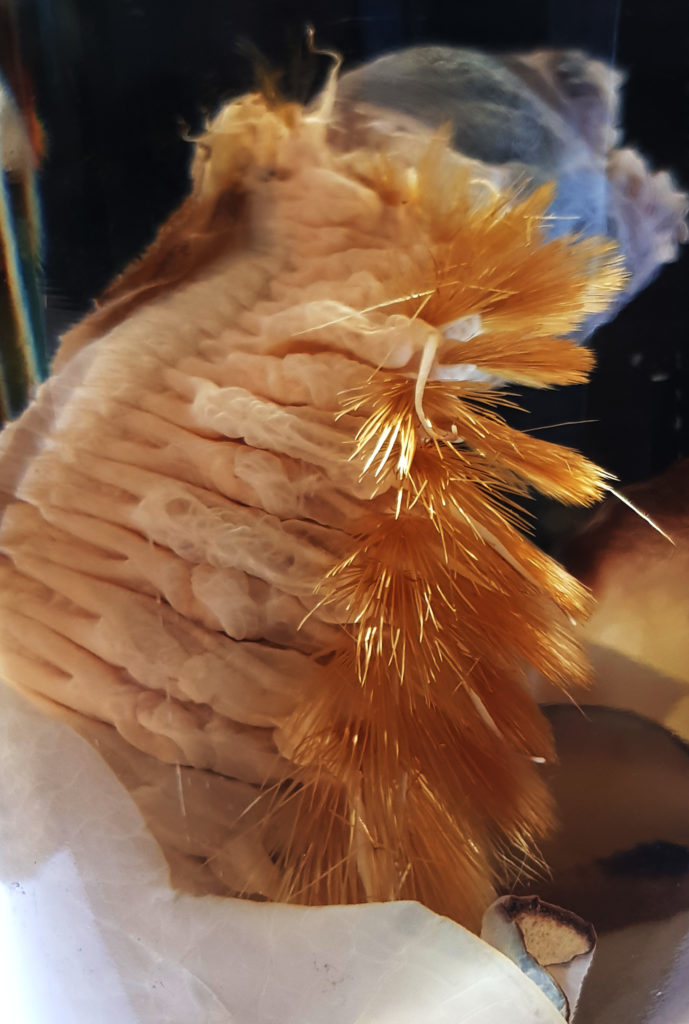
Giant sea spider
Sea spiders can be found around the world, and are normally quite insignificant in size. But in the icy Antarctic they take things to extremes – and grow to a startling size. It’s part of a recurring phenomenon where animals that live in deeper and colder waters tend to grow slower and grow much, much bigger.
At a dinner-plate 25cm across these sinister spindly hunters stalk the seafloor on impossibly long thin legs. As well as having a freakish nose-like proboscis, they have such tiny bodies that some of their internal organs have to be stored in their legs.
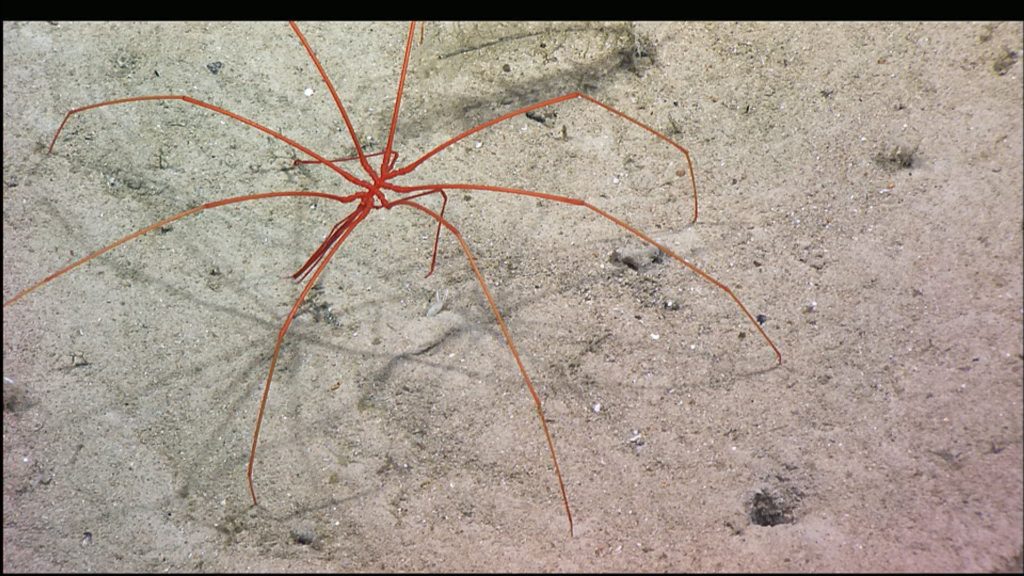
Hoff Crab
Confusingly, the Hoff ‘crab’ is a type of lobster, and relatively new to science. This pale ghostly crustacean is found hanging around deep sea superheated volcanic vents, which are some of the most extreme environments on the planet – so they’re pretty badass.
These pasty fellas are named after 80’s heartthrob David Hasselhoff, because they, like him, have an exceptionally hairy chest. However the Hoff crab’s chest hair is covered in bacteria, which it picks out and eats. Yum!

Sea pig
Sea pigs are distant cousins of starfish and sea urchins, and they look like someone filled a pair of pink rubber gloves with snot. They have a face only a mother sea pig could find, never mind love.
These gelatinous grazers trundle across the sea floor, snuffling through the mud to find delicious decaying scraps to eat. Those appendages are filled with fluid, and can be either legs or antenna, depending which is most useful.

Giant Antarctic isopod
Looking like a giant woodlouse or pill bug with an armour upgrade, giant isopods are a feature of deep sea floors the world over, and can grow to as much as 45cm in length. Thankfully the Antarctic giant isopods are a bit smaller, probably only about the size of your fist, but what they lack in length they make up for in crusty, monstrous, post-apocalyptic good looks.
Despite looking like massive insects, they are actually crustaceans, like crabs, shrimp and krill. They’re able to roll up into a protective ball when they feel threatened, and, just when you thought it might be safe to get into the water, they can swim – which they often do upside down in full-on ‘Alien’ movie face-hugger horror.

Icefish
Semi-transparent bodies and oversized heads give the Antarctic icefish a ghostly appearance. It’s able to extend its jaws to catch food, and despite having no red blood cells is one of the only fish able to withstand freezing Antarctic waters by having an inbuilt ‘antifreeze’ in its transparent blood.
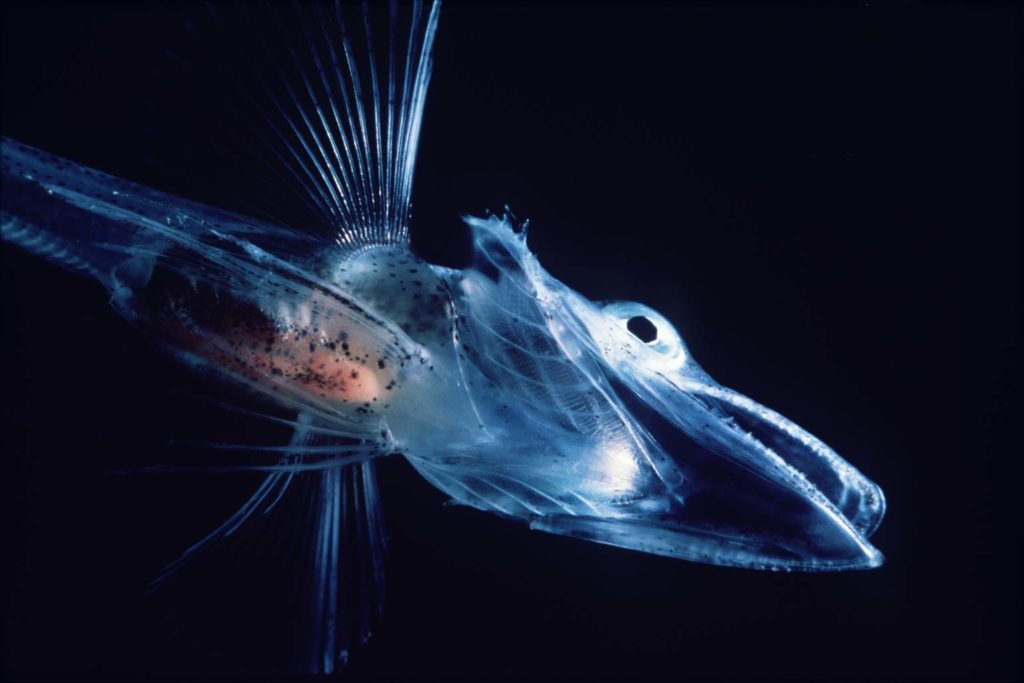
Colossal Squid

The biggest invertebrate on the planet possibly lurks in the depths of the Antarctic ocean. They have the biggest eyes in the animal kingdom, roughly the size of a dinner plate (or a giant sea spider with its legs stretched out!) – all the better for seeing in the inky depths.
Despite its enormous size, with a body of at least 2.5 metres before you add tentacles, we know surprisingly little about these deep sea dwellers. They have eight arms and two tentacles which are extra long and have rotating hooks with which to ensnare their prey. Colossal squid are tough fighters, and engage in deep sea battles with ravenous sperm whales which have never been witnessed, but we know about from the beaks of squid in sperm whale stomachs, and the sucker scars left on their body.
Article Tagged as: Antarctic, Featured, Oceans, Uncategorized, antarctic, antarctic ocean sanctuary, antarctica, oceans

